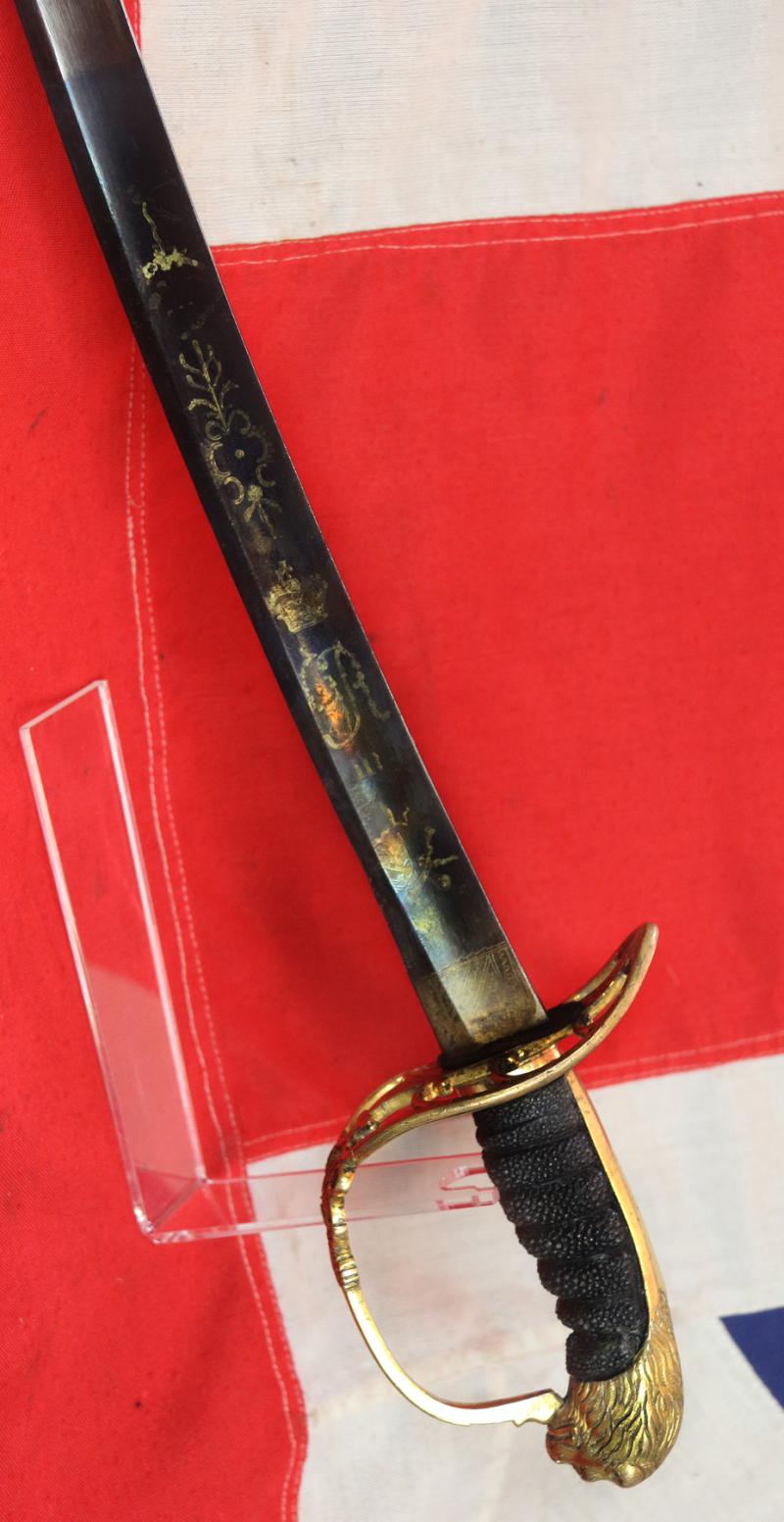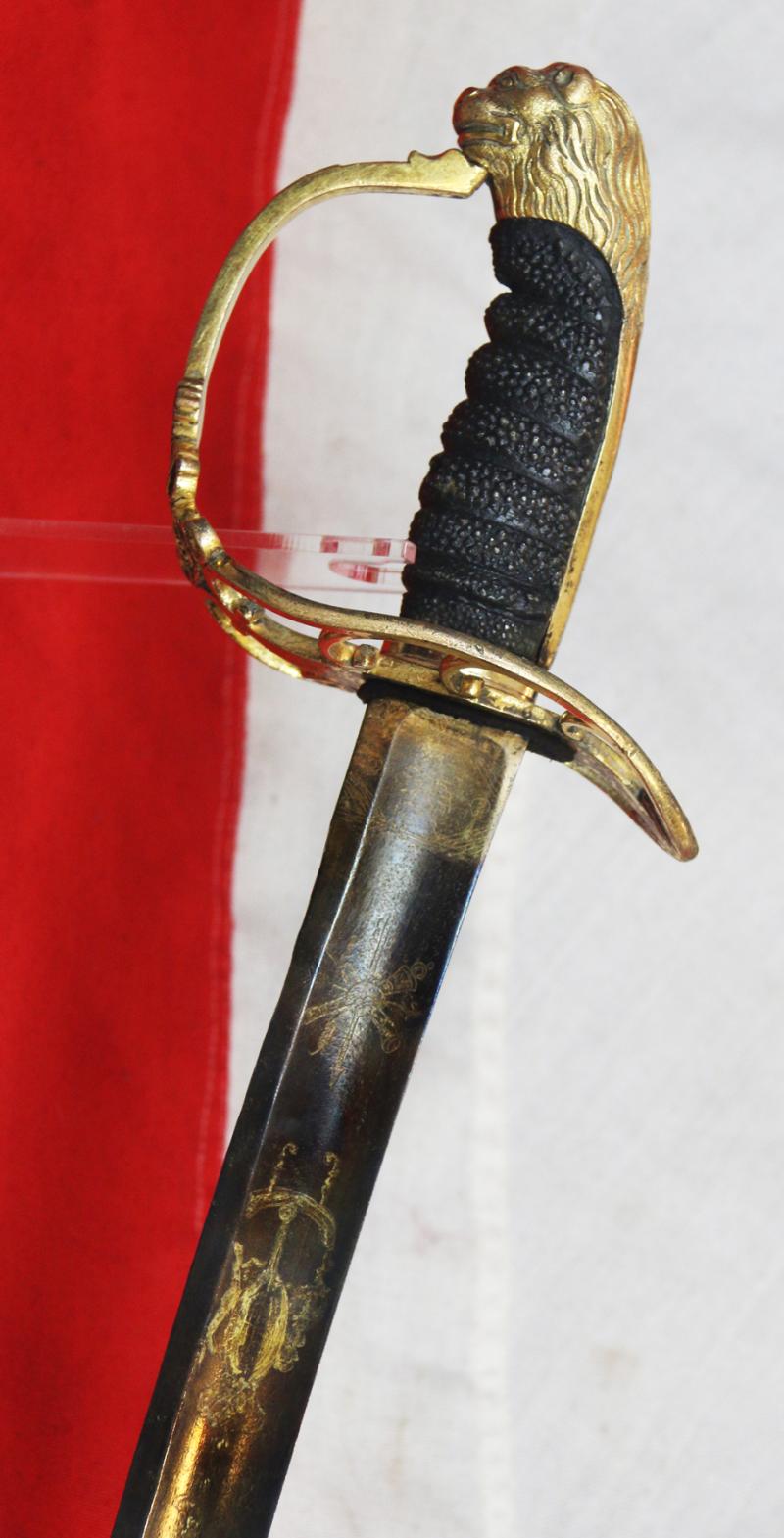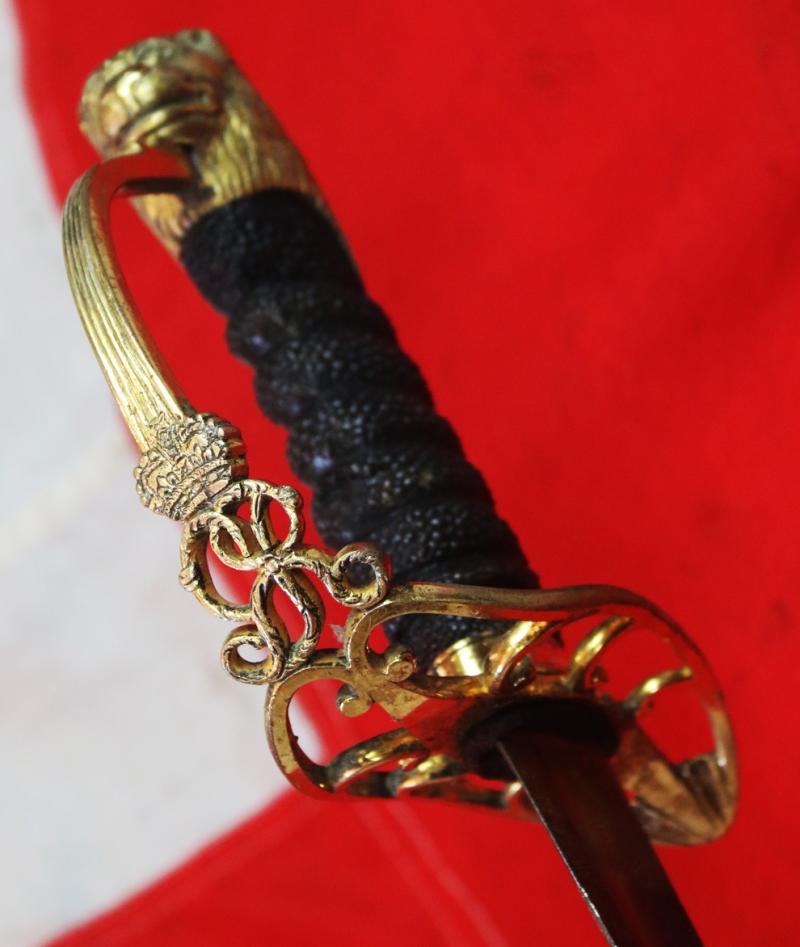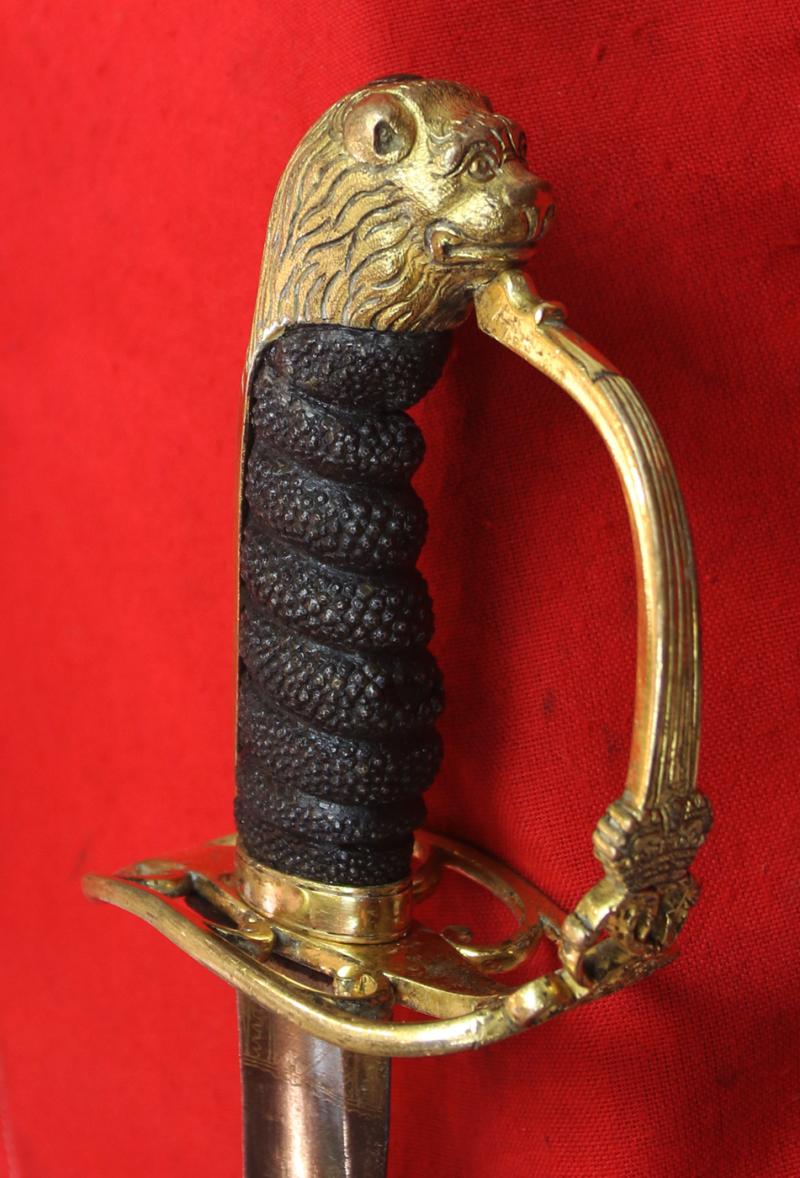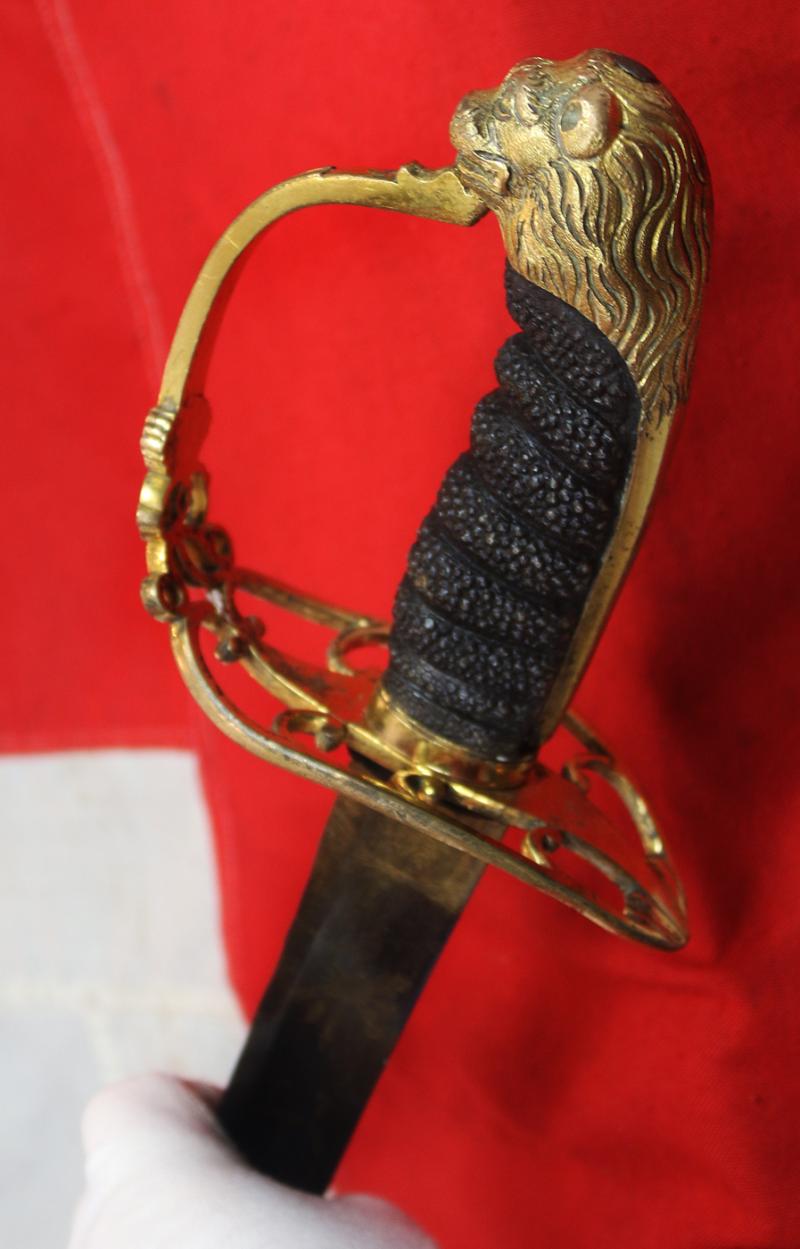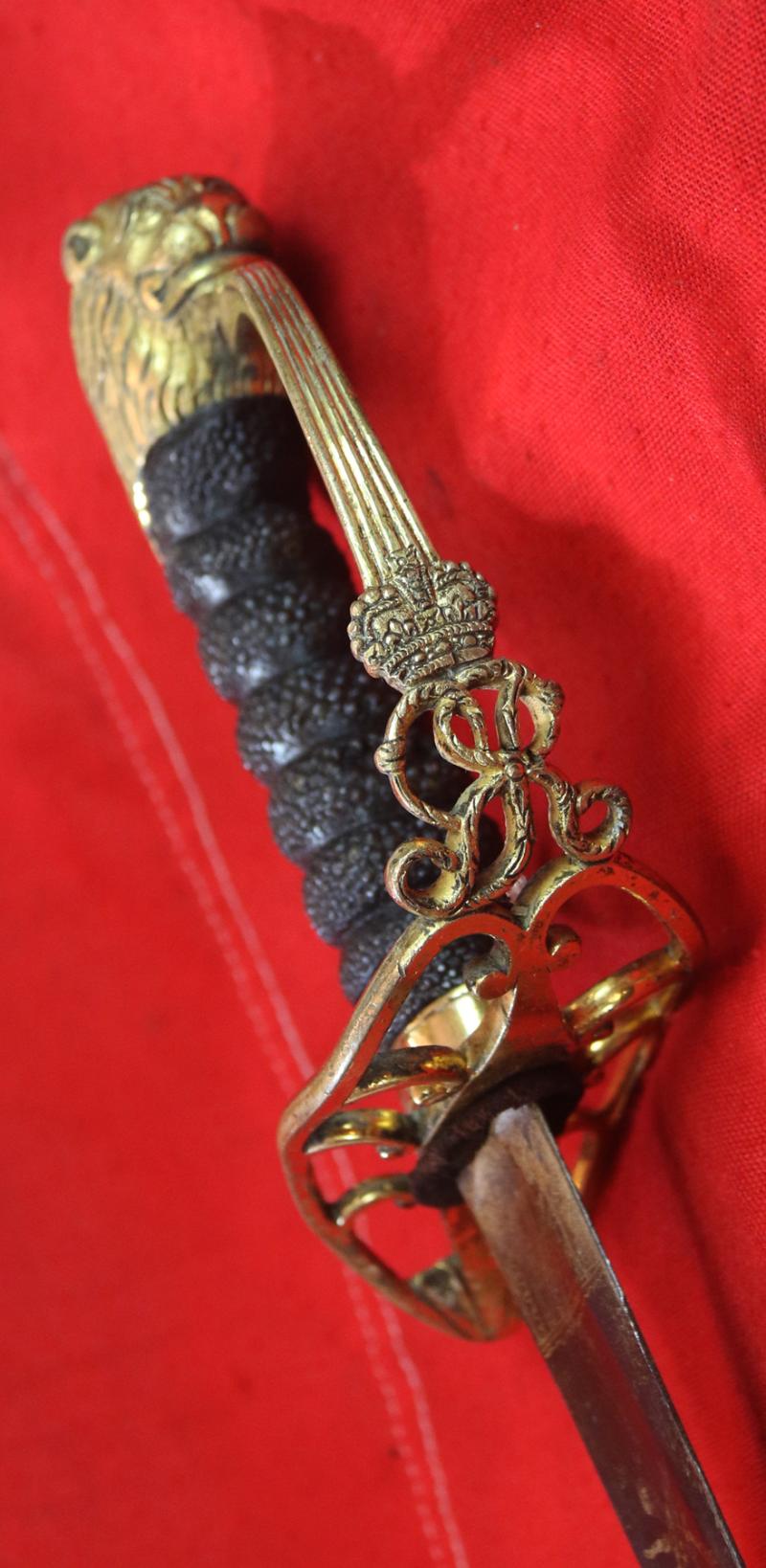A Fabulous British Napoleonic Wars Peninsular Wars and Waterloo Early 19th Century Blue and Gilt Officer's Sabre
With almost 95% of its original mercurial gilt, of pure gold applied to the bronze hilt, remaining, and a good proportion of its blue and gilt finish to the blade, with defensive, close combat sword cuts to the edge. Fine curved blade decorated with engraved scrolling foliage, crowned Royal arms and a crowned GR cypher
We show in the gallery the small close combat edge defensive blocking cuts present, that in our opinion, and of many others, including our late friend and colleague, Howard Blackmore of the Tower Armouries, should never to be removed, as they are deemed most honourable battle scars, and as every one will represent a defensive block to a slash that may have slain the defender, they should always be inviolate for posterity.
This was another design of infantry officer's sword that was quickly created, with a blade based on the highly popular 1796 Light Dragoon officers sword, but with a slighter shorter and more curved blade.
Especially used by Officer's of, say, the 95th and 60th Rifles, during the Iberian Peninsular War, the American War of 1812 and The Battle of Waterloo.
This is the pattern of British Officer's sword carried by gentlemen who relished the idea of combat, but found the standard 1796 Infantry pattern sword too light for good combat. The light infantry regiments were made up of officers exactly of that mettle. The purpose of the rifles light infantry regiments was to work as skirmishers. The riflemen and officers were trained to work in open order and be able to think for themselves. They were to operate in pairs and make best use of natural cover from which to harass the enemy with accurately aimed shots as opposed to releasing a mass volley, which was the orthodoxy of the day. The riflemen of the 95th were dressed in distinctive dark green uniforms, as opposed to the bright red coats of the British Line Infantry regiments. This tradition lives on today in the regiment’s modern equivalent, The Royal Green Jackets. The standard British infantry and light infantry regiments fought in all campaigns during the Napoleonic Wars, seeing sea-service at the Battle of Copenhagen, engaging in most major battles during the Peninsular War in Spain, forming the rearguard for the British armies retreat to Corunna, serving as an expeditionary force to America in the War of 1812, and holding their positions against tremendous odds at the Battle of Waterloo. .The sword was used, in combat, in some of the greatest and most formidable battles ever fought by the British Army during the Napoleonic Wars in Europe the Peninsular Campaign and Waterloo. This is a very attractive sword indeed and highly desirable, especially for devotees of the earliest era of the British Rifle Regiments, such as the 95th and the 60th. As a footnote, in Bernard Cornwall's books of 'Sharpe of the 95th', this is the Sabre Major Sharpe would have carried if he hadn't used the Heavy Cavalry Pattern Troopers Sword, given to him in the story in the first novel.
We show in the gallery a portrait of General Picton with his version of this type of sabre.
Overall this battle cum dress sword is in fabulous condition, from a large former museum collection of original Napoleonic Battle of Waterloo swords.
The last photo in the gallery shows a photograph of one section of the collection in the museum of Waterloo, taken in around 1900, showing all the weapons of Waterloo en situ, including all the protagonists {British, French, Prussian and Belgian muskets, swords, pistols, armour uniforms, etc}. The museum was founded and owned by a veteran of the 7th Hussars that fought at Waterloo .
No scabbard
Code: 24718
1125.00 GBP


